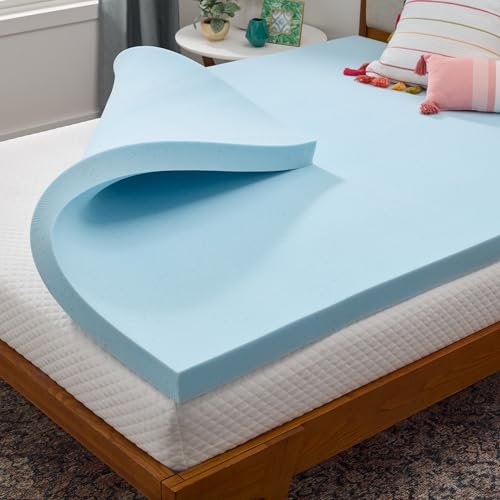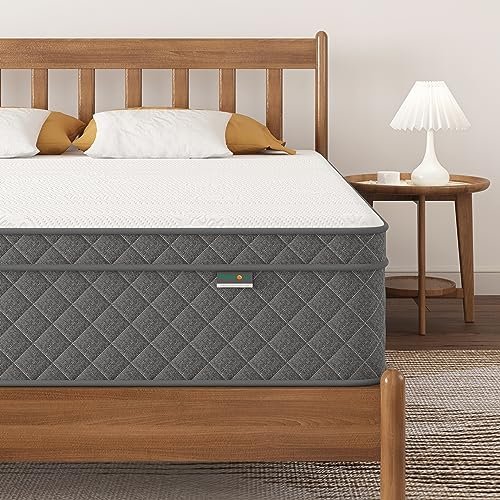
Are All Mattress Toppers Flammable? Understanding Mattress Topper Fire Safety
Recommended Product:
Choosing the perfect mattress topper can transform your sleep experience, but safety should always be a top priority. A common concern among shoppers is flammability. So, are all mattress toppers flammable? The short answer is no, but understanding the factors that influence flammability is crucial.
This article will break down the fire safety aspects of mattress toppers, helping you make informed decisions and sleep soundly knowing you’ve chosen a safe option.
Understanding Flammability Standards:
The flammability of mattress toppers is regulated, at least in many countries, to ensure a certain level of fire safety. These regulations often involve specific tests that determine how a material reacts to an open flame. Meeting these standards doesn’t mean a mattress topper is completely fireproof, but it indicates it’s been designed to resist and retard the spread of flames. This significantly reduces the risk of a fire spreading rapidly and causing significant damage or injury.
Material Matters: Key Factors Affecting Flammability:
The material a mattress topper is made from is the most significant factor affecting its flammability. Different materials have different flammability characteristics:
- Natural Fibers (e.g., cotton, wool, down): These tend to be more susceptible to ignition than synthetic materials, but are still subject to fire safety standards in most regions. Their flammability can be mitigated through treatments and manufacturing processes.
- Synthetic Fibers (e.g., polyester, memory foam): Synthetic materials can vary greatly in their flammability. Many synthetic mattress toppers undergo treatments to make them fire-resistant, meeting required safety standards. Always check the product description for information on fire retardant treatments.
- Memory Foam: Memory foam itself can be flammable, but manufacturers incorporate fire-retardant chemicals to comply with safety regulations. Understanding the specific fire-resistant treatment used is crucial.
Recommended Product:
How to Assess the Flammability of a Mattress Topper:
While you won’t be performing flammability tests at home, you can take steps to assess the safety of a potential purchase:
- Check the Product Label: Look for certifications and labels indicating compliance with relevant fire safety standards. These labels vary by region but often include information about fire-retardant treatments.
- Read the Product Description: Carefully examine the product description online or on the packaging. It should specify the materials used and any fire-resistant treatments applied. Look for phrases like “fire-retardant,” “flame-resistant,” or similar terminology.
- Contact the Manufacturer: If you have any doubts or questions about the flammability of a specific mattress topper, don’t hesitate to contact the manufacturer directly. They will be able to provide detailed information about its safety features.
Tips for Enhancing Mattress Topper Fire Safety:
Beyond choosing a fire-resistant topper, other steps can improve overall bedroom fire safety:
- Smoke Detectors: Ensure you have working smoke detectors in your bedroom and throughout your home. This is the most crucial safety measure in preventing fire-related injuries.
- Avoid Open Flames: Refrain from smoking in bed and keep candles, incense, or other open flames away from your mattress and bedding.
- Safe Electrical Practices: Avoid overloading electrical outlets and ensure all electrical appliances are in good working condition.
- Regular Cleaning: Keeping your bedroom clean and free of clutter reduces the potential spread of a fire.
Common Mistakes to Avoid:
- Ignoring the Label: Don’t overlook the importance of checking labels and product descriptions for flammability information.
- Assuming “Natural” Means Safer: While some natural materials are less flammable than others, they are still subject to flammability risks and should adhere to fire safety standards.
- Neglecting other fire safety precautions: Relying solely on a fire-resistant mattress topper while ignoring other fire safety measures is unwise.
In Conclusion:
While not all mattress toppers are inherently fireproof, many meet strict safety standards designed to minimize the risk of fire. By carefully examining product labels, reading descriptions, and taking preventative measures, you can significantly reduce fire hazards and ensure a safe and restful sleep environment. Remember, prioritizing fire safety is just as important as choosing the right comfort level for your mattress topper.
Recommended Product:
FAQ
Q. Are all mattress toppers flammable?
A. No, not all mattress toppers are equally flammable. Many are made with materials that meet certain flammability standards, but the level of fire resistance varies greatly depending on the materials used in their construction (e.g., memory foam, down, wool, cotton) and any fire-retardant treatments applied.
Q. What materials are less flammable in mattress toppers?
A. Mattress toppers made from naturally flame-resistant materials like wool tend to be less flammable than those made from synthetic materials like polyurethane foam. However, even these natural materials can ignite under extreme heat. Always check the manufacturer’s information regarding flammability standards.
Q. How can I tell if my mattress topper is flame retardant?
A. Look for labels or tags on the mattress topper that indicate compliance with flammability standards. These standards vary by region (e.g., California’s TB 117-2013). The information should specify the materials used and whether fire-retardant treatments were applied. If no information is provided, contact the manufacturer directly.
Q. Are memory foam mattress toppers flammable?
A. Memory foam mattress toppers can be flammable, although many are treated with fire retardants. The flammability of memory foam can vary significantly depending on its composition and the specific fire-retardant chemicals used. It is crucial to check the manufacturer’s information and look for certifications indicating flammability compliance.
Q. What should I do if my mattress topper catches fire?
A. Immediately get everyone out of the house and call emergency services (911 or your local equivalent). Do not attempt to extinguish the fire yourself unless it is a very small, contained flame and you have a fire extinguisher readily available and know how to use it safely. Your safety is paramount. Never put yourself in danger.
Q. Does a mattress topper‘s thickness affect its flammability?
A. While thickness itself doesn’t inherently affect flammability, a thicker topper may burn for a longer period and potentially spread fire more readily due to the increased volume of combustible material. However, the materials used and the presence of flame retardants are far more significant factors.



